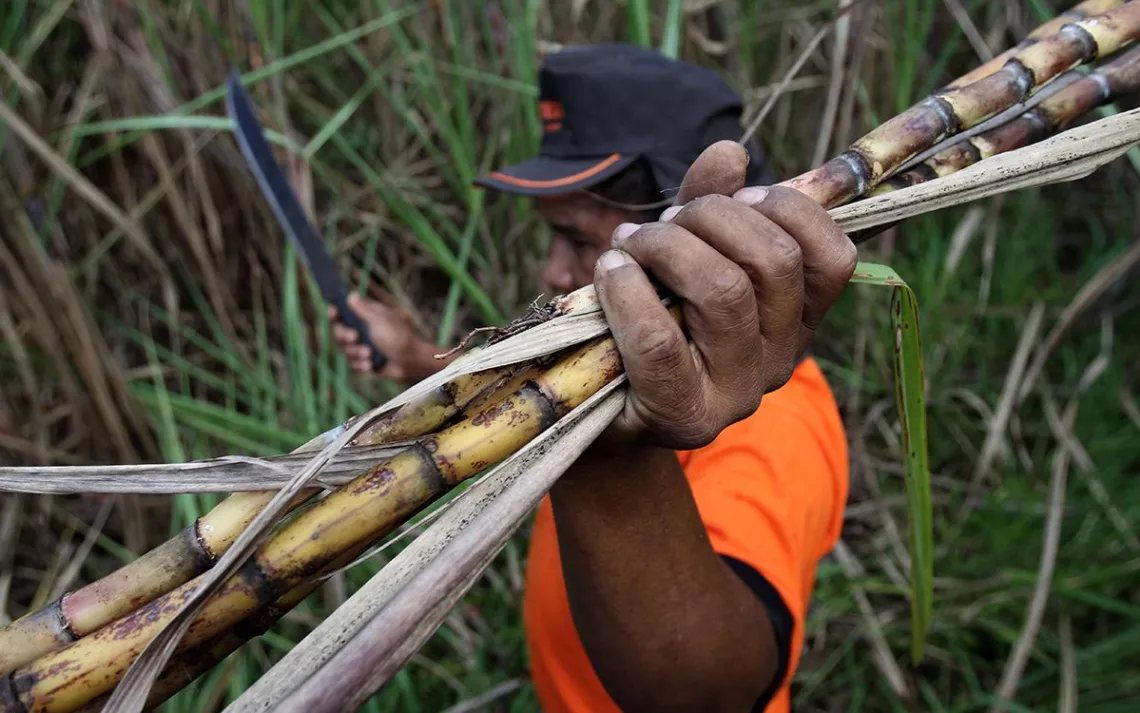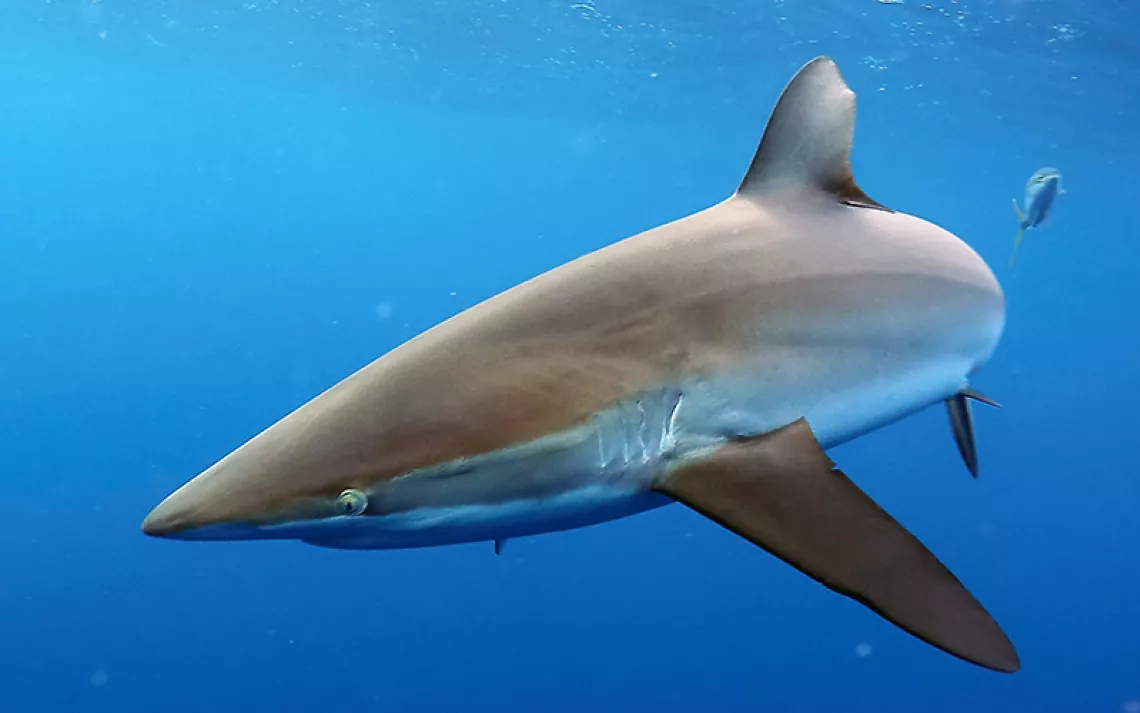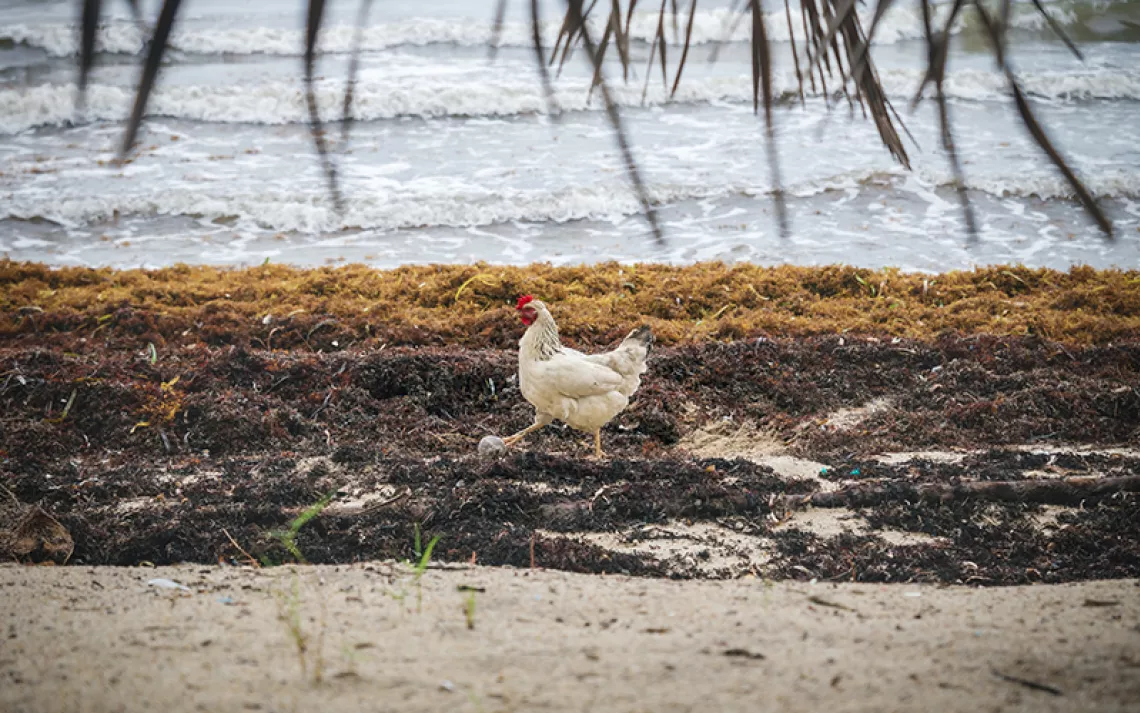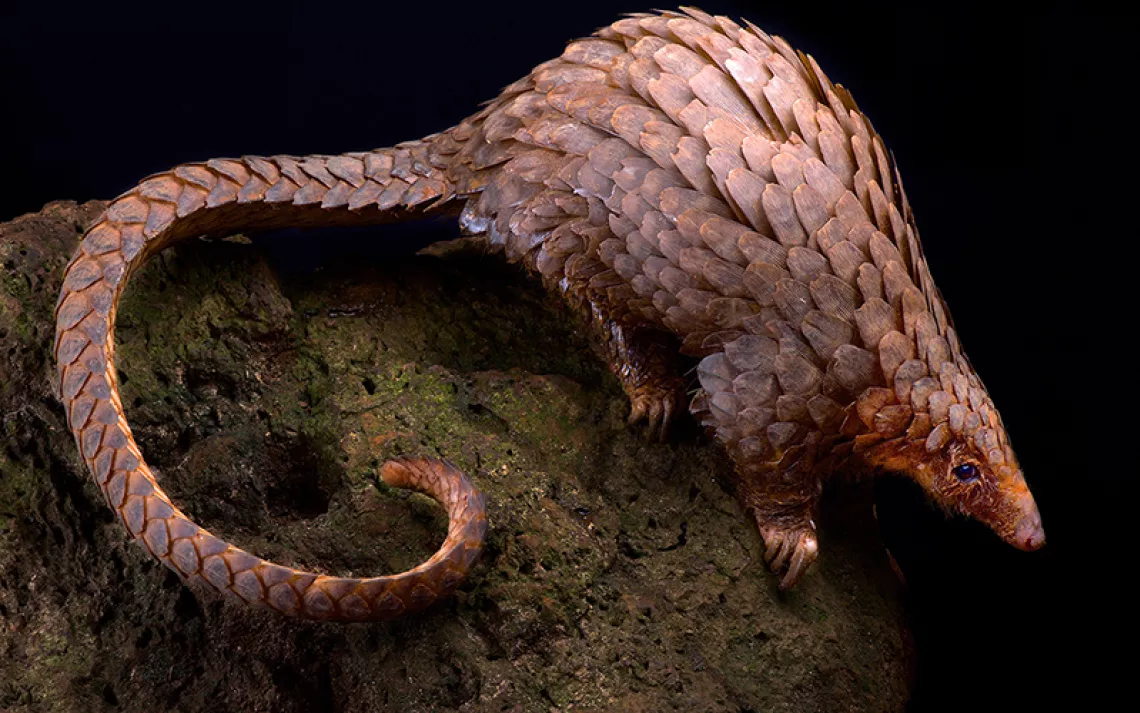In Brazil, a Sugarcane Rush Poses a New Threat to the Amazon Rainforest
Jair Bolsonaro’s rollback of restrictions opens the way for further deforestation

Photo by AP Photo/Eraldo Peres
The world watched in horror last year as the planet’s largest rainforest burned unchecked. Satellites detected the pixelated glow of 90,000 fires in the Brazilian Amazon during the 2019 burning season, a 30 percent increase from the previous year. The fires weren’t—for the most part—uncontrollable wildfires but a grim reflection of surging deforestation. They had been set to clear land of remaining woodland to make way for cattle or crops. But before the fires had even died away, the Brazilian government of Jair Bolsonaro had added another piston into the engine of deforestation, by allowing the expansion of sugarcane into protected areas in the country. Now, the rollback of a decade-old environmental protection threatens the Amazon as well as Brazil’s position as a producer of environmentally sustainable biofuels.
Brazil is the world’s largest producer of sugarcane, and in 2018 it grew over 630 million metric tons of the crop. Sugar was originally brought to the country by the Portuguese, who made a global market for slave-grown sugar. In recent decades, the crop’s leftover fibers, leaves, and stalks have become sought after to produce the biofuel ethanol, which now supplies 15 percent of Brazil’s domestic energy needs and is exported across the world to countries seeking alternatives to fossil fuels. Brazil has become a major player in the global ethanol market, second only to the United States.
Brazil’s competitive advantage on biofuels has largely depended on the fact that Brazilian ethanol is, in some ways, environmentally superior to corn ethanol from North America. A 2009 decree signed by then president Luiz Inácio Lula da Silva prevented sugarcane expansion into the Amazon and the southern wetland savanna known as the Pantanal, both of which are areas of immense biodiversity. The ban established zoning rules for sugar plantations and prohibited public funding to support sugarcane cultivation in those areas. But in November, President Bolsonaro, long an ally of Brazil’s powerful agribusiness sector, revoked the environmental safeguards.
Many environmentalists and academics were perplexed by Bolsonaro’s move to lift the ban, particularly since research sent to the Ministry of Agriculture prior to the decision shows that there are vast tracts of land elsewhere in the country that are better suited to sugarcane production. “The decision by Bolsonaro seems to be more political and ideological than practical,” says Javier Godar, a senior research fellow at the Stockholm Environment Institute.
Sugarcane is mostly a tropical and subtropical crop. Yet cold and dry weather is needed during the ripening phase, when the stalks dry out and sugars accumulate, and for the harvesting and crushing of the crop. In the Amazon region, soils are nutrient-poor and conditions are persistently humid, making it far more unsuitable. “The sugarcane plant needs a period of physiological stress, either cold or drought,” says Luis Fernando Guedes Pinto from the NGO Imaflora. “These conditions don’t happen in the Amazon, so the plant doesn’t convert biomass into sugar.” More than 90 percent of Brazilian sugarcane is grown in the relatively drier central-southern and northeastern regions of the country.
Sugarcane expansion in the Amazon doesn’t make sense in economic terms,” says Britaldo Soares-Filho, a professor from the Institute of Geosciences at the Federal University of Minas Gerais. He says the Bolsonaro decision is instead “part of a coordinated attack to dismantle Brazil's environmental protection carried out by a sector of agribusiness—in this case, UNICA [the Brazilian Sugarcane Industry Association].” In a statement, the association said it is committed to zero deforestation and a “sustainable way of working.”
The policy move may be more related to Bolsonaro’s larger agenda of enabling increased land-grabbing, Soares-Filho says. Removing the ban and allowing sugarcane cultivation in new areas could appreciate land prices, and that, in turn, will likely lead to further expansion into the rainforest by cattle ranchers and land speculators, all of which will accelerate deforestation. Since the 2019 fires, deforestation continues to accelerate; in the first quarter of 2020, deforestation increased by 55 percent in comparison with the same period last year. “Any expansion of a given land use [comes] at the cost of some other land use,” Godar says, “which often triggers a chain reaction that ends with deforestation, usually in the form of new pastures.”
Because the growing conditions in the Amazon are less than ideal, large-scale sugarcane cultivation likely won’t arrive there in the next few years, Pinto says. Yet it could be a possibility in the near future with selective breeding—as happened with soybeans—as well as with a changing environment. If, as many scientists fear, the Amazon crosses a tipping point after a certain level of deforestation and starts to turn into a savanna-like environment, then the region would be more suited to sugarcane. “Then it would be perfect,” Pinto says.
The Bolsonaro government says that the old zoning law had been rendered obsolete because of the country’s Forest Code, which regulates deforestation within the Amazon, and a new federal fuel program called RenovaBio that came into effect this year. RenovaBio requires zero deforestation from biofuel producers, yet it is a voluntary scheme, explains Pinto, and sugarcane producers could simply opt out. Studies have shown the Forest Code to have low levels of compliance in the Amazon.
The Pantanal, the world’s largest tropical wetlands, is under much more immediate threat, Pinto says. Natural periods of drought and nutrient-rich soils provide far more suitable conditions to grow the crop. And existing infrastructure set up to produce soybeans (roads, river barges, and ports) could be coopted for sugarcane, speeding its advance.
The strongest short-term impact will be to the reputation of Brazil’s ethanol market, which may now become tainted by an association with deforestation. “It is damaging to the image of a sector that was decoupled from the deforestation debate,” Pinto says. A major trade deal between the European Union and the Mercosur block, of which Brazil is a part, risks being undermined by the ban—which could have further environmental repercussions in other countries hoping to move away from fossil fuels. “The EU has interest in substituting diesel with ethanol from Brazil, but now with the potential impact on the Amazon deforestation, this agreement seems farther away,” Soares-Filho says.
If the Bolsonaro administration policy isn’t revised, Ferrante says, “Brazilian biofuels can no longer be considered clean, and in no way a green energy.”
 The Magazine of The Sierra Club
The Magazine of The Sierra Club



